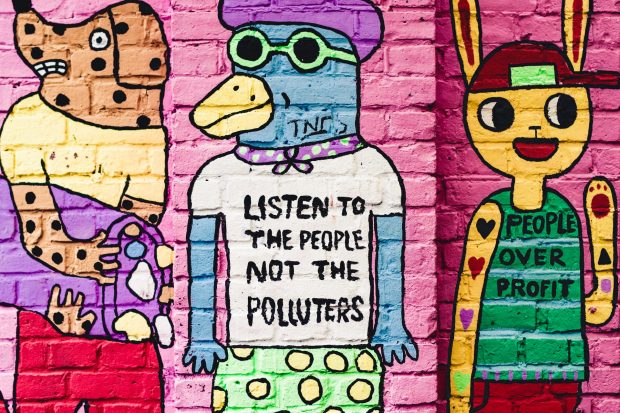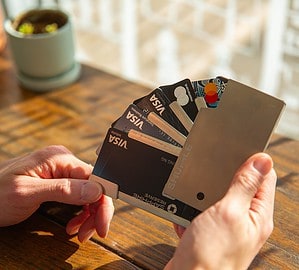
Image Source: https://unsplash.com/photos/tOM8X1NJbQA
Adaptability and resilience are the driving forces in consumer behavior in 2021. At least that’s what the research company Euromonitor International has found. The pandemic has created, even accelerated some of the biggest trends expected to define 2021.
Not surprisingly, people have found new priorities in the way they spend their money, from making more sustainable decisions to going out less often.
While the “new normalcy” has forced some reputable brands to close their shutters for the last time, others are finally seeing the fruition e-commerce environment -online sales – in particular. The surge in online sales marks a dramatic change in consumer behavior worldwide, with increasingly more people relying on online markets.
In 2021, brand investors are constantly at the age of their seats to learn what’s the next big thing that will turn heads and gain an advantage over their competitors.
1.Mental Health Awareness
Prior to 2020, we have already faced record-high rates of anxiety, loneliness, and depression, mostly led by the Z generations and Millennials, but 2020 made sure to tax our mental strength to a whole new level.
According to the United States Centers for Disease Control, almost one-third of the 5,412 survey partakers across all age groups said that they experienced symptoms of depression and anxiety, and more than a quarter reported trauma and stress-induced disorders because of the pandemic.
2020 forced even Gen Z and Millennials to become somewhat less stigmatized. Some of the most popular stars and platforms of 2020 willingly address mental health issues, be it Billie Eilish and Snap or Chloe or Halle.
In the face of uncertainty that challenged our wellbeing – both mentally and physically – many are looking to brands to help them relive the load. Consumers are now attracted to brands that clearly state objectives and values, offer comfort, provide solutions to a problem or combat current issues.
2.Restless and Rebellious
2021’consumers defy misinformation and place their needs first. While governments, social media, and local health agencies are supposed to serve as authoritative figures during a pandemic, a recent survey shows that 1 in 5 U.S citizens do not trust pandemic-related information from these sources.
The survey showed 22 percent of respondents “have some distrust or no trust at all” in pandemic-related information offered by the federal state. What’s more, respondents even show high levels of disbelief emerging technologies – many of which experience a surge in use amid pandemic.
Also, 4 in 10 U.S citizens reported distrust or no trust of software-based assistants (chatbots) that engage with clients on the platforms or on the phone – and 39 percent reported feelings with smart speaker assistants likewise. Even more, half of those surveyed show no trust regarding social media, with 1 in 5 reporting “distrust” in the information shared on socials. In the meantime, long-established technologies like mobile phones, fax machines, landline telephones were the “reliable” technologies among consumers. Yet despite this massive distrust in technologies, 71 percent of respondents said their use of the above-mentioned devices increased during a pandemic, with 44 percent reporting a considerable growth in tech use.
3.Conscious Thrifters – Sustainability “All-time High”
The pandemic made some of us believe that, with our personal health at stake, public attention on the climate issues would wane. This prediction turned out to be massively wrong.
With multiple lockdowns pushing, forcing buyers to stay indoors, purchasing habits have had to change considerably since last year’s March. According to Melody Loops, this change will only stick around long-term if buyers make greater inroads with additional behavior changes beyond 2021. And, they will. A recent report shows that 60 percent of buyers were making more environmentally friendly, ethical, or sustainable purchases since the pandemic started, with 90 percent intending to do so long-term.
For global brands, that means a strong end to the era of greenwashing. Conscious thrifters are more patient than ever when it comes to researching brands – for many, simply “doing shopping” has resumed to a new cadence, especially with fewer activities to lodge their time. What’s more, a renewed importance for brands to understand their consumers’ local environments has encouraged new recycling initiatives.
4.More Safety Obsessed Consumers
The pandemic has placed health and hygiene front of mind for consumers worldwide. This awareness has been heightened since the COVID-19 can be easily spread through indirect content or any touchpoint, and people know it.
Brands had to move quickly in response to the “new normalcy” and government policies to ensure they could operate and, at the same time, keep employees and consumers safe. As for payment services, it seems like they were the first to respond. Local shops have quickly emulated consumers’ reluctance to visit crowded places and interact with a human, providing digital ordering and even robot deliveries.
Hygiene products are still the main winners of this trend. Manufacturers are preparing value-added products in line with mounting health consciousness to meet new hygiene standards, fueling innovations that rank sanitation as an imperative product feature.
5.2021 – The Year of the Yard
2020 was the “Indoor Year” as stay-at-home pandemic orders led to a home-related spending wave. This year, consumers have a strong desire to commune with nature, as Americans turn “all their attention” to optimize their outdoor space, as a study shows.
As we speak, some 88 percent of U.S citizens are discontent with their outdoor spaces, with 66 percent finding their layout, function, and comfort (45 percent) lacking.
It is not like they totally overlooked their outdoor living spaces, but in 2021 consumers plan to add more decorative and functional features to enjoy their outside more. The number of people planning to invest in new outdoor fixtures and accessories has more than doubled from 2020.
Yet, 2021 will see gradually more consumers adding functional and decorative elements to relish their time outside more. The number of consumers planning to buy new outdoor accessories sand furniture has more than doubled with 58 percent compared to 23 percent last year.
While it may seem daunting to think about what comes next, consider that we’ve already made it through one of the stormiest years in modern human history. With that resilience, 2021 can become the year of a buoyant recovery and innovation.



